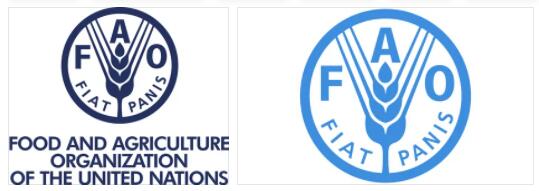The Food and Agriculture Organization of the United Nations (FAO) was founded in 1945 with the aim of combating world hunger by, among other things, securing people’s access to good food. Current issues concern poverty reduction, disaster relief, increased agricultural production, genetic diversity, sustainable fishing, etc. Director-General José Graziano Silva took office in 2012. The FAO has 192 member states, of which the EU is included as its own member.
Introduction
The Food and Agriculture Organization (also known as FAO by ABBREVIATIONFINDER) of the United Nations is a specialized body whose main goal is to fight hunger in the world. FAO works to improve yields in agriculture and forestry as well as fisheries.
The aim is to ensure people’s access to good food and thereby raise the standard of living and quality of life, not least in rural areas in poor countries. More efficient food production and distribution will also contribute to a growing world economy.
The FAO works primarily by being a knowledge bank, monitoring body and debate forum for food and agriculture issues. The organization compiles information, imparts expert knowledge, draws up guidelines and functions as an arena for intergovernmental negotiations. Part of the activity takes place through field projects in developing countries.
In addition, the FAO conducts disaster relief operations. The assistance includes the distribution of grain and tools as well as technical assistance. Many Member States consider that aid activities should be reduced and that the FAO should instead refine its so-called normative tasks as specialized agencies, ie the information and analysis activities and the monitoring functions.
A large part of the work is done together with the UN’s two other organizations that specialize in food issues: the World Food Program (WFP), which mediates aid, and the International Agricultural Development Fund (IFAD), which funds agricultural projects. All three are based in the Italian capital Rome.
The structure
The FAO has 190 members (2007), grouped into five regions. The EU countries are represented both individually and jointly as a member organization.
Every two years, all members of the FAO Conference, which is the organization’s highest decision – making body, meet. Here, the goals for the overall activities and the work program as well as the budget for the next two years are discussed and established.
The budget for 2006-2007 amounted to 768 million US dollars. Member States finance the budget through mandatory membership fees according to a specific scale. Aid activities are mainly financed by external grants, for example from the United Nations Development Program (UNDP).
Between conferences, the Council, with 49 members elected by the conference, acts as the executive body.
The FAO is headed by a Director-General with a term of six years. Directors-General may be re-elected. Jacques Diouf from Senegal in West Africa took over as Director – General in 1994 and began his third term in January 2006. Critics have accused Diouf of, among other things, favoring African countries in the field, but he has resisted criticism.
The secretariat works directly under the Director General . In 2006, the FAO had just over 3,600 employees, of which about half worked at its headquarters in Rome and the rest at up to one hundred regional or local offices. Experts are also hired for shorter periods and fixed-term field projects. Previously, there were more employees and a larger proportion of the staff worked at the head office. But after criticism of bureaucratization and overly expensive administration, decentralization began in the mid-1990’s. Many member states have national committees to facilitate contacts with the FAO. Sweden has such an FAO group at the Ministry of Agriculture.
The external cooperation
Within the UN system, the importance of modernizing agriculture is emphasized. This means that the FAO largely cooperates with other UN bodies. The FAO, for example, works very closely with the United Nations Development Program (UNDP), which also funds a large part of the FAO’s field projects.
The FAO also cooperates with so-called non-governmental organizations (NGOs, see Glossary) in various countries and with the regional development banks. At the same time, the importance of the individual state’s commitment to achieving FAO’s goals in collaboration with international bodies is emphasized.
